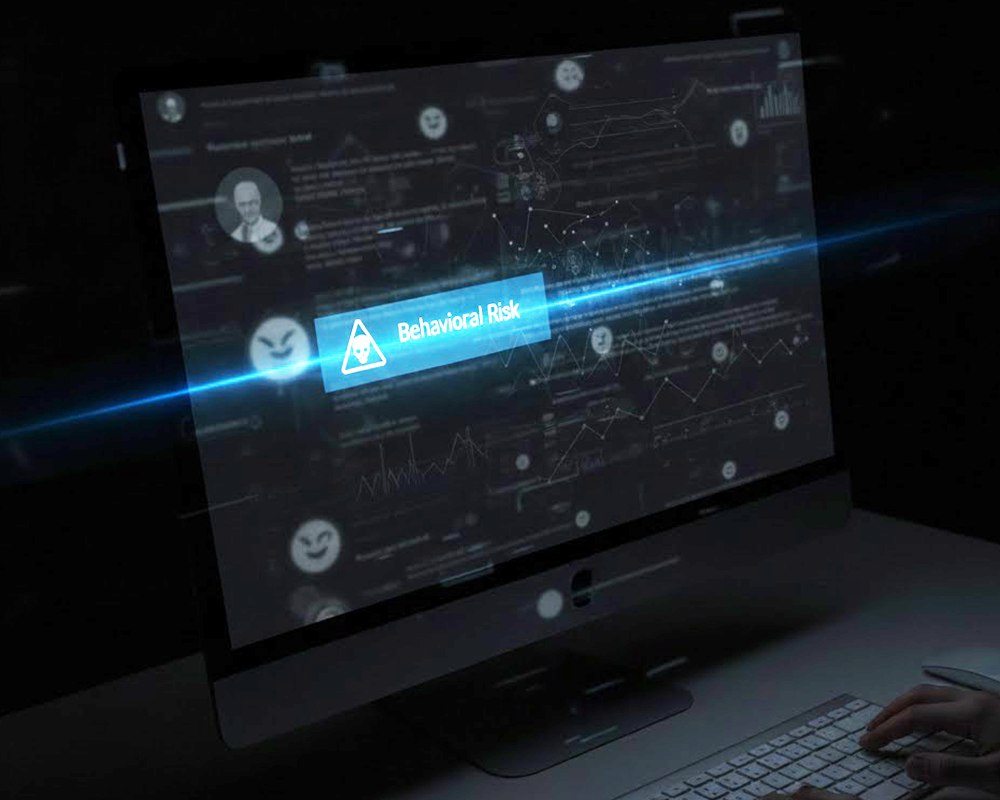Your background check vendor just sent you the all-clear report. Clean criminal history, employment verified, education confirmed, references check out. You're about to extend an offer to what looks like the perfect candidate, except for three nagging details that don't quite add up.
Their LinkedIn profile shows different job titles than their resume. The phone number for their "previous supervisor" was created last week, according to a reverse lookup. And that prestigious university they claim to have attended? Their registrar has no record of anyone by that name graduating in the specified year.
But hey, the background check came back clean, so you're good to go, right? Wrong. And this scenario is playing out in HR departments across the country every single day.
Here's the uncomfortable reality most HR professionals are discovering: there's a massive gap between what you think your background checks are catching and what they're actually designed to detect. While you're operating under the assumption that a "comprehensive" background check means comprehensive protection, candidates with fraudulent credentials are walking through your hiring process with ease.
The problem isn't that your background check vendor is lying to you—they're probably delivering exactly what they promised. The issue is that most HR teams don't realize how limited those promises are. When your vendor says they've "verified employment," they mean they confirmed someone with that name worked at that company during those dates. They're not confirming that the person sitting in your interview is actually that employee.
This isn't about sophisticated international conspiracies or deepfake technology. This is about everyday fraud that's hiding in plain sight within your current hiring process. The candidate who's using their friend's work history. The applicant who created a fake supervisor reference using a Google Voice number. The interviewee who's legitimately qualified but is working for three other companies simultaneously.
These aren't edge cases—they're becoming standard operating procedure for a growing number of job seekers who've figured out that most background check processes are surprisingly easy to game.
The stakes for HR teams are getting higher by the day. Beyond the obvious productivity nightmare of a bad hire, you're now dealing with compliance risks, security vulnerabilities, and the kind of negligent hiring liability that keeps legal departments awake at night. When courts are raising the bar for what constitutes "reasonable" due diligence in hiring, discovering that your "thorough" background check missed obvious red flags isn't just embarrassing, it's legally dangerous.
But here's the good news: fraud-proofing your background check program doesn't require a complete overhaul or a massive budget increase. It requires understanding where the current gaps are, knowing what questions to ask your screening provider, and implementing five straightforward upgrades that transform your background checks from a checkbox exercise into actual fraud detection.
The HR professionals who are staying ahead of this trend aren't necessarily spending more on background checks—they're spending smarter. They're asking better questions, demanding better verification, and building fraud detection into their hiring process instead of hoping their vendor will catch everything.
Ready to stop hoping and start knowing? Let's dive into exactly how to upgrade your background check program to catch the fraud that's currently slipping through the cracks.
What Your Current Process Actually Covers
Let's have an honest conversation about those glossy background check proposals sitting in your vendor files. You know the ones, packed with impressive lists of "comprehensive" searches, databases with millions of records, and turnaround times that seem too good to be true. Spoiler alert: They usually are.
The disconnect between what background check vendors promise and what they actually deliver is the HR equivalent of ordering a "fully loaded" burger and getting a sad patty with lettuce. Technically, they delivered what they said they would—it's just that their definition of "fully loaded" and yours were operating in completely different universes.
When most other vendors say "comprehensive criminal search," they mean: We'll run your candidate's name through our database and tell you if we find any exact matches.
What most HR teams hear: We'll uncover any criminal history that might be relevant to this hire.
The reality: If the candidate's name is spelled slightly differently in court records, if they used a nickname, or if they moved between jurisdictions with different reporting systems, that "comprehensive" search just became comprehensively useless.
Common HR Assumptions That Create Vulnerabilities
After two decades in the background screening business, we've identified three assumptions that consistently leave HR teams exposed to fraud. These aren't just theoretical vulnerabilities, they're the specific blind spots that fraudulent candidates exploit every single day.
Assumption #1: "If it's not in the criminal database, they're clean."
Here's what creates this vulnerability: Most criminal databases are updated sporadically, require exact name matches, and miss entire categories of offenses depending on jurisdiction. In New York alone, county-level searches miss thousands of misdemeanor convictions because they're recorded at city, town, and village courts that don't report to county systems.
Real-world impact: You hire someone thinking they have a clean record, only to discover later they have multiple relevant convictions that never made it into the database your vendor searched.
Assumption #2: "Employment verification confirms they worked there."
The gap: Traditional employment verification confirms that someone with that name worked at the company. It doesn't verify that the person you're interviewing is actually that employee.
How it gets exploited: Candidates use legitimate employment histories from friends, relatives, or people with similar names. They pass employment verification while having zero actual experience in the role.
Assumption #3: "Reference checks are just a formality."
The vulnerability: Most HR teams treat reference checks as a courtesy call rather than a verification step. They accept contact information at face value and ask generic questions that any coached reference can answer.
The fraud opportunity: Creating fake references has never been easier. Google Voice numbers, professional-sounding email addresses, and friends who are willing to pose as former supervisors can create convincing reference networks in minutes.
The most dangerous phrase in background screening? "No records found." Most HR teams breathe a sigh of relief when they see this, but experienced investigators know it often means the search wasn't broad enough, the databases weren't comprehensive enough, or the candidate knows exactly how to stay under the radar.
If your current background check process is built on these assumptions, you're not just vulnerable to fraud, you might be inviting it. The good news is that recognizing these gaps is the first step toward closing them.
Five Background Check Upgrades Every HR Team Should Implement
The gap between fraud-resistant background screening and standard verification isn't about revolutionary technology or massive budget increases—it's about asking better questions and demanding more thorough verification of the information you're already collecting. These five upgrades can be implemented immediately with most background check providers, though some will reveal their limitations faster than others.
The key is understanding the difference between confirming that information exists and verifying that it actually belongs to the person you're hiring. Each upgrade transforms a potential vulnerability into a fraud detection checkpoint, turning your background check process from a checkbox exercise into actual risk management.
Upgrade #1: Identity Validation Beyond the Basics
The Current Approach: Most HR teams accept a Social Security Number trace as proof of identity validation. If the SSN comes back as valid with an address history, they assume they're hiring the right person.
What Goes Wrong: SSN traces only confirm that a Social Security Number exists and has been used at various addresses. They don't verify that the person you're interviewing is actually the person associated with that SSN. Candidates can use legitimate SSNs with fabricated identities, stolen credentials from people with similar names, or synthetic identities that pass basic verification.
The Upgrade: Implement multi-point identity verification that cross-references multiple data sources. Look for logical consistency in the candidate's timeline—do their address changes align with employment history? Does their educational timeline make sense with their claimed work experience? Verify that provided documents contain proper security features, and independently confirm identity through multiple channels rather than relying on a single database query.
Upgrade #2: Reference Investigation vs. Reference Collection
The Current Approach: HR teams collect reference contact information from candidates, call the provided numbers, ask standard questions about performance, and move on. References are treated as trusted sources rather than claims that need verification.
What Goes Wrong: Creating fake references has never been easier. Candidates use Google Voice, professional-sounding emails, and friends posing as former supervisors. When you only call the numbers provided by the candidate, you're essentially letting them control the entire verification process.
The Upgrade: Verify references before you rely on them. Independently locate contact information through company directories or professional networks rather than using only candidate-provided numbers. Ask specific, detailed questions about projects and achievements that only genuine supervisors would know. Cross-reference multiple sources to ensure stories align, and be suspicious of references who are always immediately available or provide remarkably similar descriptions.
Upgrade #3: Employment Verification That Actually Verifies Employment
The Current Approach: Traditional employment verification confirms that someone with the candidate's name worked at a company during specified dates. HR teams assume this means the person they're hiring actually held that position.
What Goes Wrong: This approach only answers "Did someone with this name work there?" not "Is the person I'm hiring actually that employee?" Candidates with common names can borrow employment histories, relatives can use each other's work records, and people with inside knowledge about companies can claim employment they never actually had.
The Upgrade: Go beyond basic employment confirmation to verify the candidate is actually the person who held that position. Speak with actual supervisors who can discuss specific job responsibilities and achievements, not just HR departments confirming dates. Ask about particular projects or initiatives the candidate claims to have worked on—details that only the real employee would know. Verify that the employment timeline makes sense with other life events and geographic history.
Upgrade #4: Education and Credential Deep Dives
The Current Approach: HR teams verify degrees and certifications by contacting schools or checking online databases. If the institution confirms a degree was issued to someone with that name, they consider education verified.
What Goes Wrong: Modern credential fraud goes far beyond diploma mills. Candidates claim degrees from legitimate universities but with fabricated graduation dates, use professional licenses that belong to people with similar names, or create continuing education credits from non-existent training providers.
The Upgrade: Verify credentials through direct contact with institutions rather than third-party verification services that can be compromised. Ensure educational achievements align logically with employment timeline and career progression. For licensed professionals, check not just current license status but also disciplinary history and continuing education compliance. Look for timing inconsistencies—degrees obtained during full-time employment without explanation, or certifications from institutions in locations where the candidate has no history.
Upgrade #5: Digital Footprint Analysis as Part of Standard Screening
The Current Approach: Most HR teams either completely avoid looking at candidates' online presence due to compliance concerns, or conduct informal social media "research" without clear guidelines or documentation.
What Goes Wrong: Ignoring digital footprints entirely means missing obvious fraud indicators, while unstructured social media review creates legal liability and bias issues. Both approaches leave HR teams vulnerable to hiring candidates whose online presence contradicts their application materials.
The Upgrade: Implement systematic, compliant digital footprint analysis focused specifically on fraud detection rather than character assessment. Look for inconsistencies between professional online profiles and application information—different job titles, employment dates, or experience levels on LinkedIn versus the resume. Check that claimed industry experience aligns with professional content and connections. Document your process clearly and focus on factual discrepancies rather than personal opinions or lifestyle choices. This isn't about judging candidates' personal lives—it's about catching contradictions that indicate fraud.
These upgrades don't require completely changing your background check process, they require changing how thoroughly you verify the information you're already collecting. The difference between basic verification and fraud detection often comes down to asking one additional question: "How do we know this is actually about the person we're hiring?"
Building Fraud Detection into Your Hiring Process
The most effective fraud prevention happens before you even order a background check. Smart HR teams build fraud detection directly into their hiring workflow through strategic interview techniques, thoughtful application design, and careful vendor selection.
Interview Techniques That Expose Fraud
During interviews, ask candidates to walk through specific projects or challenges in detail—fraudulent candidates struggle with follow-up questions that require intimate knowledge of the work they claim to have done. Instead of accepting surface-level descriptions, drill down into the details: "What specific challenges did you encounter with that software implementation?" "How did you measure the success of that initiative?" "What would you do differently if you managed that project again?"
Application Design That Discourages Deception
Design your applications to include cross-verification questions that make fraud harder: ask for supervisor names and contact information separately from reference sections, request specific project dates that can be verified against employment timelines, and include legal language that creates accountability for false information.
Vendor Selection Criteria
When selecting background check providers, prioritize those who can explain exactly how they verify identity beyond basic database searches, who use human investigators rather than purely automated systems, and who can provide examples of fraud they've actually caught. The goal isn't to turn your hiring process into an interrogation—it's to create enough verification touchpoints that fraudulent candidates either expose themselves or decide your organization isn't worth the risk.
From Hoping to Knowing
The uncomfortable reality is that candidate fraud isn't going away, it's getting more sophisticated, more common, and more costly with each passing year. While you can't control the evolution of fraud techniques, you can control how prepared your organization is to detect and prevent them.
The five upgrades outlined in this guide aren't theoretical improvements for some future hiring landscape. They're practical changes you can implement immediately, regardless of your current background check provider or budget constraints. The difference between organizations that get burned by hiring fraud and those that catch it before it causes damage often comes down to asking one additional question at each verification step: "How do we know this information actually belongs to the person we're hiring?"
The choice is simple: Continue operating under the dangerous assumption that "comprehensive" background checks provide comprehensive protection, or upgrade your verification process to match the sophistication of today's fraud landscape. Because in a world where candidates can fabricate entire professional histories with a few clicks, hoping your current process will catch everything isn't a strategy—it's a liability waiting to happen.
Your organization's security is only as strong as your hiring process. Make sure yours is built to catch the fraud that others are missing. Contact CIChecked today at (518) 271-7546 to learn how our investigative approach to background screening can transform your hiring process from a potential vulnerability into actual fraud protection.






%20Featured%20Image.png)